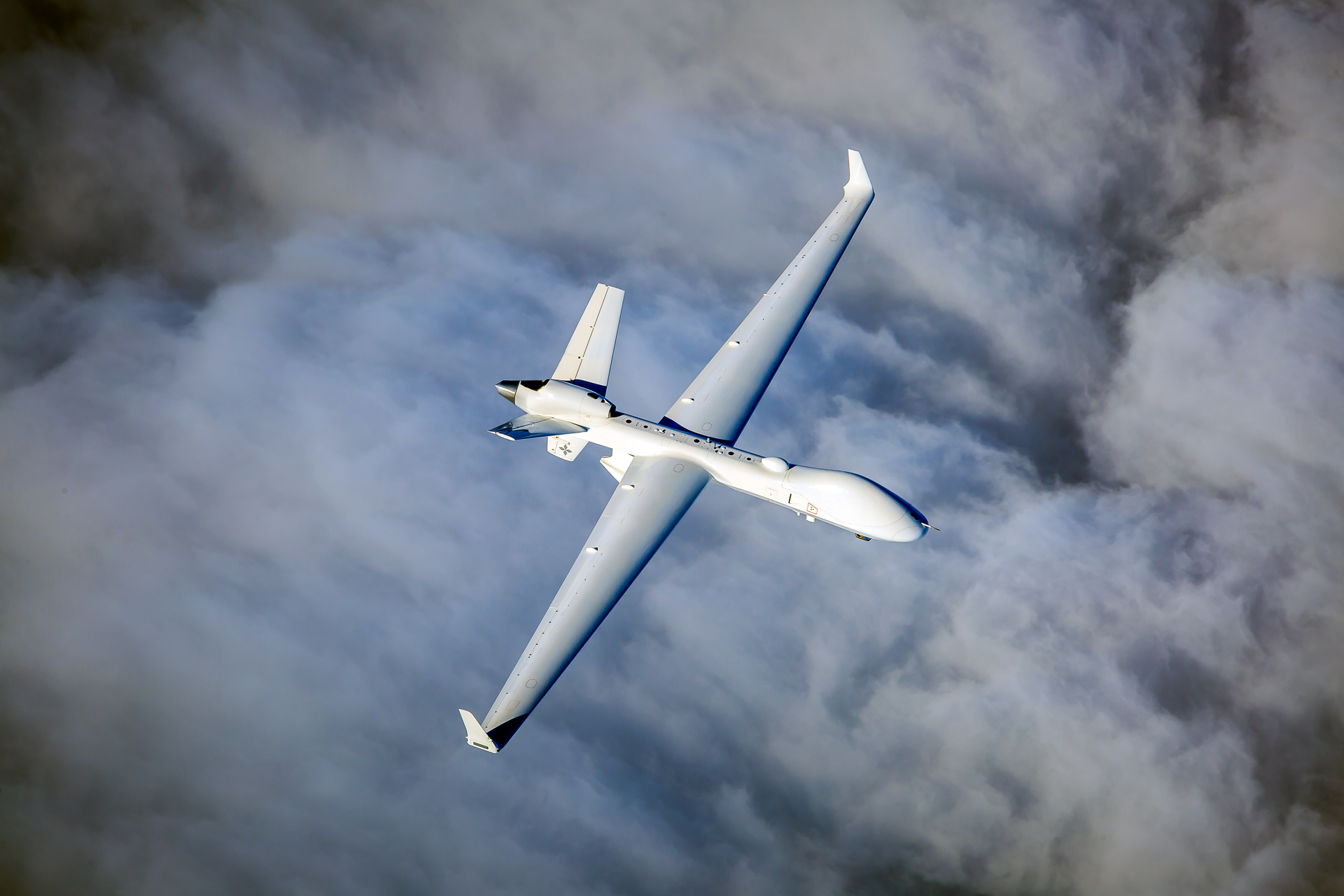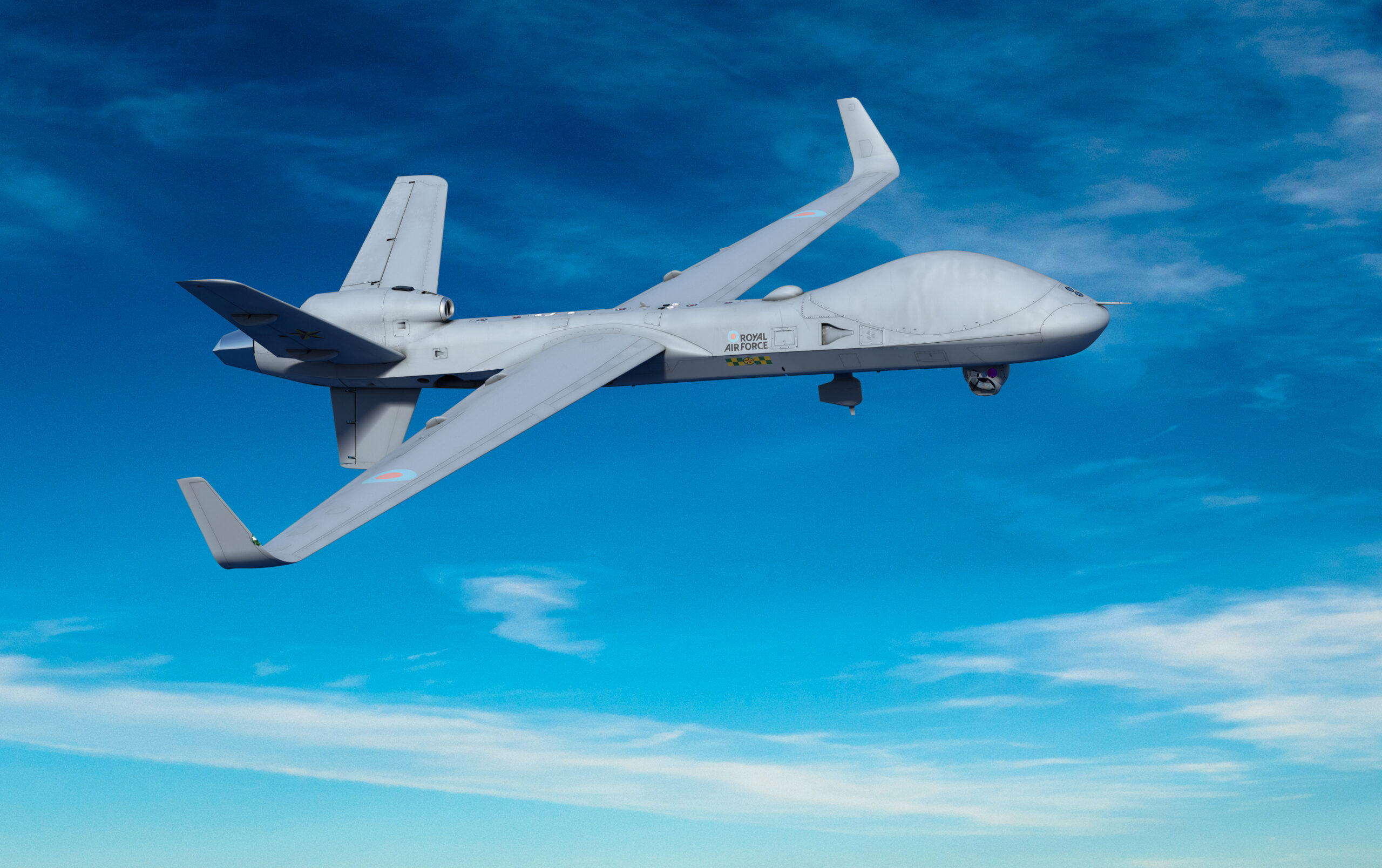The Royal Air Force (RAF) in the United Kingdom is leading the way among advanced air forces with a new fleet of remotely piloted aircraft that will revolutionize its military, security and other vital government operations both at home and abroad
The Royal Air Force will be the world’s first operator of the MQ-9B SkyGuardian, a high-flying, long-loitering, sharp-eyed and widely capable new remotely operated patrol aircraft that has been designed and built to the same airworthiness standards as manned aircraft. After a successful demonstration in British and European airspace this summer, the first aircraft, which the RAF call Protector RG Mk1, are set to begin operating from their permanent home at RAF Waddington, in the East Midlands of England, in 2024.
The MQ-9B, which is built by the U.S. aerospace and defense contractor General Atomics Aeronautical Systems, Inc., is the most advanced medium altitude, long endurance remotely piloted aircraft of its kind. Not only can it stay airborne for around 40 hours, which permits a huge diversity of assignments and applications, it can carry a suite of advanced payloads, including sensors and weapons, to take on nearly any assignment.
It also can integrate with the normal flow of aviation traffic in British and European airspace, using a first-of-its-kind Detect and Avoid System. That means the RAF’s Protector doesn’t need special accommodation from airspace authorities or a human-flown chase aircraft, as other or earlier remotely piloted aircraft did. Detect and Avoid uses onboard sensors to give the MQ-9B’s human pilot in the ground control station an equivalent knowledge about other traffic as they’d have if they were sitting onboard.
This, coupled with its certifiable design and build, means that the RAF can, in the phrase often used in commercial aviation, simply “file and fly” – submit a flight plan and then go conduct a mission within British airspace or somewhere far afield via regular British or European air corridors, with no special arrangements.

Photo of GA-ASI-owned MQ-9B SeaGuardian demonstrating its unmatched multi-domain capabilities out of RAF Waddington in September 2021.
This summer, for example, a Protector prototype showed how well it handles maritime domain awareness: Equipped with an ocean search radar and specialized kit, it proved that it can linger for many hours over the vital British and European waters, supplying detailed intelligence, surveillance and reconnaissance about shipping and more. This comprehensive maritime picture is vital to naval commanders, border enforcement, coast guard authorities and other government officials in order to be able to act quickly.
Maritime domain awareness, however, is only one of many roles. An aircraft could return home, shed its equipment from one such mission, refuel and take on other equipment to do something else.
“We are only scratching the surface of what we could achieve with this aircraft,” said the RAF’s Air Commodore Rich Barrow, senior responsible owner for the RAF’s air ISR and command and control programmes. “The beauty of Protector is our ability to change its payload or develop new payloads. Maritime search radars are a great example but there is much more we can do and probably ideas we haven’t even thought of yet.”
Remotely piloted aircraft can serve as communications nodes, providing data connections between other aircraft or ground units like a flying wifi router. They can listen for radio or other signals of interest to British commanders or intelligence leaders. And they’ll be able to take aboard ordnance in the event U.K. operations abroad require the application of force.
The MQ-9B is the latest in a line of highly successful and well-proven remotely piloted aircraft operated by a number of other sophisticated allied air forces, from those of the United States to France to Italy and beyond. The familiarity with the systems and their use means British forces can integrate closely with those other militaries when the time comes, in the way they already do with the MQ-9 Reaper.
That combination of a proven platform with the deep international integration means that the capable new Protector will continue supporting British and allied troops virtually wherever they go, Barrow says.
“The ability to see over the horizon and provide situational understanding of the battlefield is well understood by all soldiers whatever their nationality,” he said. “Protector will build upon Reaper’s success at providing a tactical advantage to troops on the ground.”
























